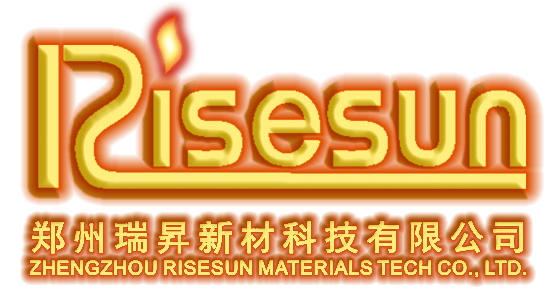16
2024
-
10
Exploring the Benefits of Moly-D Heating Elements in Industrial Applications
Exploring the Benefits of Moly-D Heating Elements in Industrial Applications Table of Contents 1. Introduction to Moly-D Heating Elements 2. What is Moly-D Technology? 3. Key Advantages of Moly-D Heating Elements 3.1 Energy Efficiency 3.2 Exceptional Durability 3.3 Superior Heating Performance 4. Applications of Moly-D Heating
Exploring the Benefits of Moly-D Heating Elements in Industrial Applications
Table of Contents
- 1. Introduction to Moly-D Heating Elements
- 2. What is Moly-D Technology?
- 3. Key Advantages of Moly-D Heating Elements
- 4. Applications of Moly-D Heating Elements in Industry
- 5. Comparing Moly-D Heating Elements with Traditional Heating Solutions
- 6. Cost-Effectiveness of Moly-D Heating Elements
- 7. Maintenance and Care for Moly-D Heating Elements
- 8. The Future of Moly-D Heating Elements in Industrial Applications
- 9. Frequently Asked Questions
- 10. Conclusion
1. Introduction to Moly-D Heating Elements
In the fast-paced world of industrial applications, the demand for effective and reliable heating solutions has never been higher. As industries continuously seek to improve their operational efficiency while minimizing costs, Moly-D heating elements emerge as a transformative solution. These advanced heating elements are engineered to provide exceptional performance, durability, and energy efficiency, making them an attractive choice for various industrial applications.
2. What is Moly-D Technology?
Moly-D technology is centered around the use of molybdenum disilicide (MoSi2), a compound known for its excellent high-temperature stability and thermal conductivity. Moly-D heating elements are designed to operate at elevated temperatures, making them suitable for environments where traditional heating elements would fail. This innovative technology leverages the unique properties of molybdenum to deliver consistent and reliable heating in a range of industrial applications.
3. Key Advantages of Moly-D Heating Elements
3.1 Energy Efficiency
One of the standout features of Moly-D heating elements is their remarkable **energy efficiency**. These elements are designed to heat up quickly and maintain temperature stability, minimizing energy consumption. In industries where heating costs can be substantial, the implementation of Moly-D technology can lead to significant cost savings over time.
3.2 Exceptional Durability
Moly-D heating elements are engineered to withstand extreme temperatures and harsh operating conditions. Their robust construction ensures a longer lifespan compared to traditional heating solutions, reducing the frequency of replacements and maintenance. This durability translates to **lower operational downtime** and increased productivity.
3.3 Superior Heating Performance
The heating capabilities of Moly-D elements are unparalleled. They can achieve and maintain higher temperatures with precision, allowing for faster processing times in industrial applications. The ability to deliver consistent and uniform heat contributes to improved product quality, making Moly-D technology a preferred choice for industries such as ceramics, glass, and metal.
4. Applications of Moly-D Heating Elements in Industry
Moly-D heating elements find application across a wide range of industries due to their versatility and reliability. Some notable applications include:
- **Ceramic Firing**: Moly-D elements provide the necessary high temperatures required for sintering and firing ceramics, ensuring optimal results.
- **Glass Manufacturing**: In the production of glass, maintaining consistent temperatures is crucial. Moly-D heating elements excel in this regard, facilitating superior glass quality.
- **Metallurgy**: These heating elements are utilized in various metallurgical processes, including heat treatment and casting, where precise temperature control is essential.
5. Comparing Moly-D Heating Elements with Traditional Heating Solutions
When comparing **Moly-D heating elements** with traditional heating solutions such as wire or ceramic heaters, several key differences emerge. Traditional heating elements often struggle with longevity and efficiency, leading to increased maintenance costs. In contrast, Moly-D elements offer:
- **Higher Temperature Tolerance**: Moly-D elements can operate at temperatures that exceed those of conventional materials, minimizing the risk of thermal failure.
- **Improved Energy Savings**: With their rapid heating capabilities, Moly-D elements reduce energy consumption compared to traditional options.
- **Longer Lifespan**: The robust nature of Moly-D technology ensures longer operational periods, lowering total cost of ownership.
6. Cost-Effectiveness of Moly-D Heating Elements
Investing in Moly-D heating elements can lead to significant long-term savings. While the initial investment may be higher than traditional heating solutions, the benefits of **energy efficiency**, reduced maintenance, and increased productivity justify the cost. Businesses can experience shorter payback periods, ultimately leading to a healthier bottom line.
7. Maintenance and Care for Moly-D Heating Elements
To maximize the lifespan and effectiveness of Moly-D heating elements, proper maintenance is essential. Here are some maintenance tips:
- **Regular Inspections**: Conduct thorough inspections to identify any signs of wear or damage early on.
- **Temperature Regulation**: Ensure that temperature settings are within the operating range for Moly-D elements to prevent thermal shock.
- **Cleanliness**: Maintain a clean environment around the heating elements to avoid contamination that could impact performance.
8. The Future of Moly-D Heating Elements in Industrial Applications
As industries evolve, so too do their heating needs. The future of Moly-D heating elements looks promising, with ongoing advancements in materials science and manufacturing processes. Innovations such as enhanced thermal efficiency and integration with automation technologies are expected to further elevate Moly-D elements' role in industrial applications.
9. Frequently Asked Questions
What materials are Moly-D heating elements made from?
Moly-D heating elements are primarily composed of molybdenum disilicide (MoSi2), which provides excellent high-temperature stability.
How do Moly-D elements compare to traditional ceramic heaters?
Moly-D elements offer superior temperature tolerance, energy efficiency, and durability compared to traditional ceramic heaters.
What industries benefit the most from Moly-D heating elements?
Industries such as ceramics, glass manufacturing, and metallurgy significantly benefit from the high-temperature capabilities and efficiency of Moly-D heating elements.
Can Moly-D heating elements be used in outdoor applications?
While Moly-D elements are designed for industrial environments, proper housing and protection are necessary for outdoor applications to ensure longevity.
How can I improve the lifespan of my Moly-D heating elements?
Regular inspections, maintaining proper temperature settings, and ensuring a clean environment can enhance the longevity of Moly-D heating elements.
10. Conclusion
Moly-D heating elements represent a significant advancement in industrial heating technology. Their unique combination of **energy efficiency**, exceptional durability, and superior performance make them an ideal choice for various applications. By investing in Moly-D technology, businesses can optimize their heating solutions, reduce operational costs, and enhance overall productivity. As industries continue to evolve, Moly-D heating elements will undoubtedly play a crucial role in shaping the future of efficient industrial heating.



